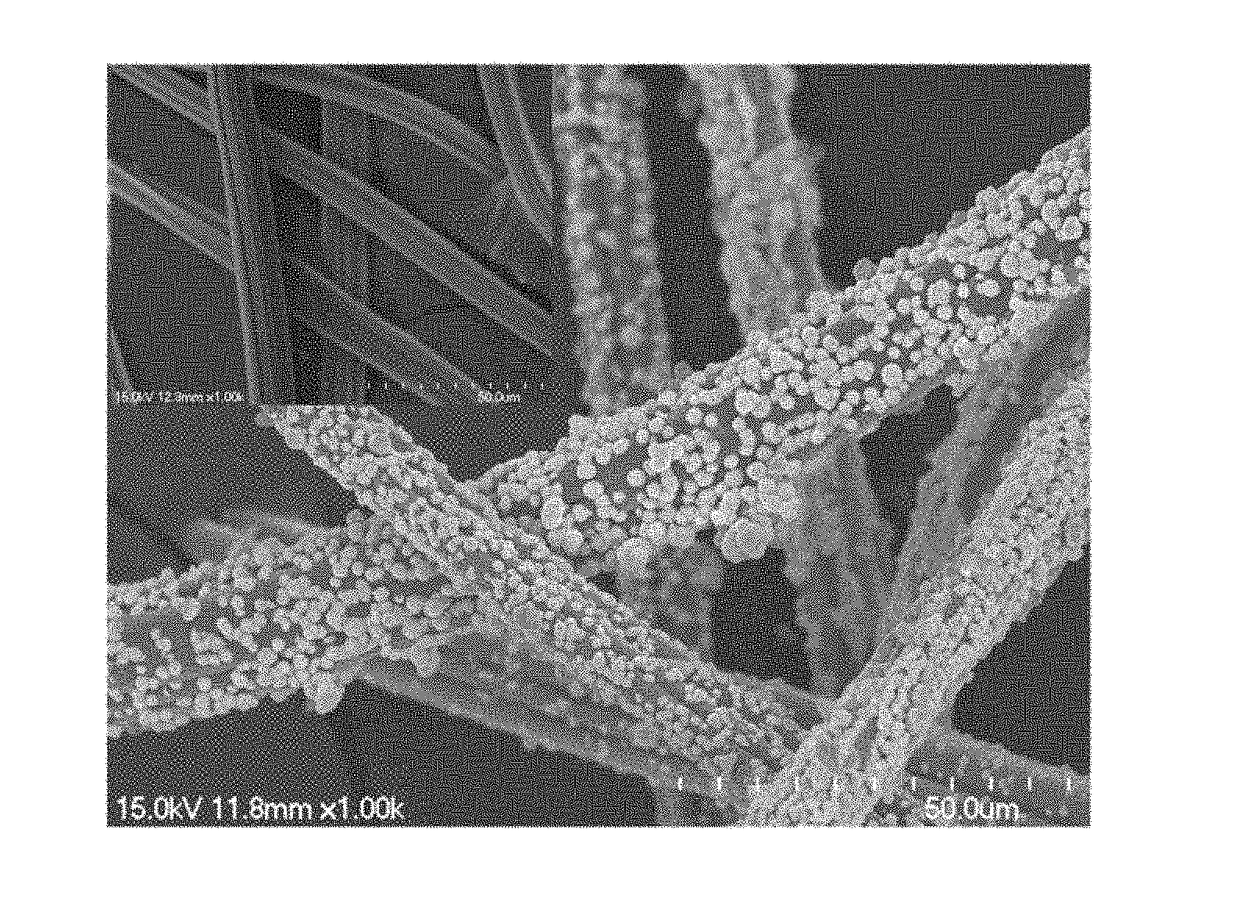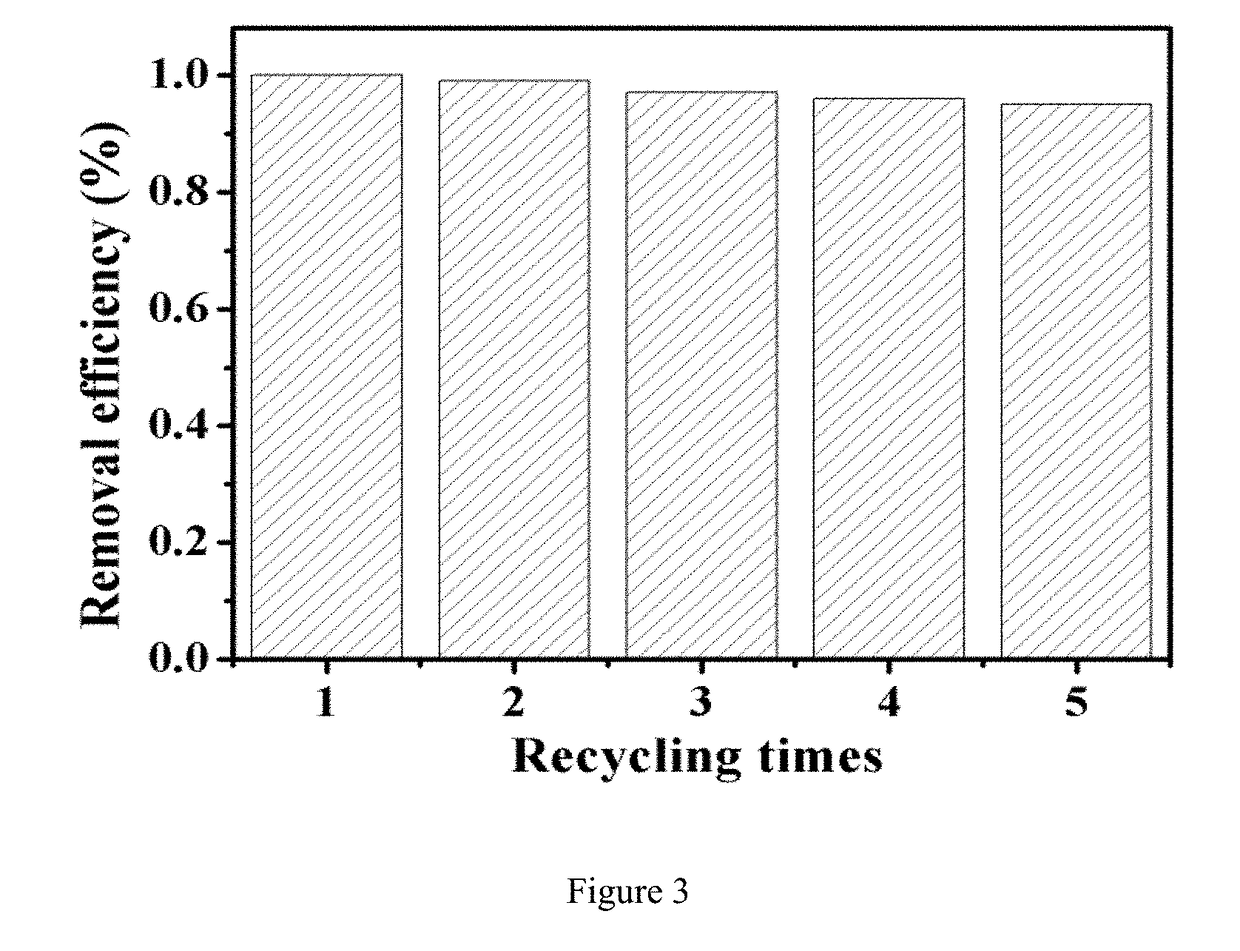Composite with synergistic effect of adsorption and visible light catalytic degradation and preparation method and application thereof
a technology of visible light and catalytic degradation, which is applied in the field of composite materials with synergistic effect of adsorption and visible light catalytic degradation and preparation methods, can solve the problems of poor biodegradability, difficult to deal with industrial wastewater, and discharge of dye waste water
- Summary
- Abstract
- Description
- Claims
- Application Information
AI Technical Summary
Benefits of technology
Problems solved by technology
Method used
Image
Examples
implementation 1
[0032] Preparation of bismuth oxyiodide / bismuth oxychloride composite nanoparticles immobilized activated carbon fiber composite (ACF@BiOI0.5Cl0.5).
[0033]At room temperature, dissolving Bi(NO3)3.5H2O (2 mmol) and ACF (50 mg) in ethylene glycol (20 mL), to get solution A1. Dissolving KI (1 mmol) and KCl (1 mmol) in ethylene glycol (20 mL), to get solution B1. Adding solution B1 dropwise to solution A1, stirring for 2 h, transferring to a hydrothermal reactor and reacting for 12 h at 160° C. After reaction, taking out the reaction kettle, cooling and opening to collect the fibrous product by filtration, washing separately with deionized water and 95% ethanol twice, placing in a vacuum oven to dry at 60° C. for 12 h, to obtain the product ACF@BiOI0.5Cl0.5, the SEM image is shown in FIG. 1.
[0034]As shown in FIG. 1, in the composite material ACF@BiOI0.5Cl0.5, the composite nanoparticles BiOI0.5Cl0.5 were spherical and evenly distributed on the ACF surface.
[0035]Implementation 2: Preparat...
implementation 4
[0040] Photocatalytic experiment of PEI-g-ACF@BiOI0.5Cl0.5 towards Acid Red 1.
[0041]The 50 mg photocatalytic composites in implementation 3 were added into 50 ml AR 1 aqueous solution (50 mg / L) and stirred for 1.5 h in the illumination condition, the 3 ml suspension was analyzed every 10 min by UV-vis DRS at 530 nm, as shown in FIG. 2.
[0042]As shown in FIG. 2, the adsorption efficiency of PEI-g-ACF@BiOI0.5Cl0.5 to AR 1 was reached at 60% in 10 min. The 50 mL solution containing 50 ppm AR 1 was totally degraded from wastewater after 60 min by 50 mg of PEI-g-ACF@BiOI0.5Cl0.5. The excellent degradation efficiency of composite to AR 1 is attributed to the big absorption capacity on the synergistic adsorption-degradation process.
[0043]Implementation 5: Recycle experiment of PEI-g-ACF@BiOI0.5Cl0.5 towards Acid Red 1.
[0044]The recycle photocatalyst of PEI-g-ACF@BiOI0.5Cl0.5 was continuously used for five cycles to degrade AR 1 solution under the same conditions. The 50 mg photocatalytic co...
PUM
| Property | Measurement | Unit |
|---|---|---|
| adsorption | aaaaa | aaaaa |
| mass concentration | aaaaa | aaaaa |
| Mw | aaaaa | aaaaa |
Abstract
Description
Claims
Application Information
 Login to View More
Login to View More - R&D
- Intellectual Property
- Life Sciences
- Materials
- Tech Scout
- Unparalleled Data Quality
- Higher Quality Content
- 60% Fewer Hallucinations
Browse by: Latest US Patents, China's latest patents, Technical Efficacy Thesaurus, Application Domain, Technology Topic, Popular Technical Reports.
© 2025 PatSnap. All rights reserved.Legal|Privacy policy|Modern Slavery Act Transparency Statement|Sitemap|About US| Contact US: help@patsnap.com



